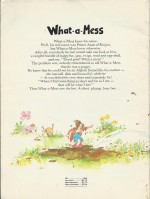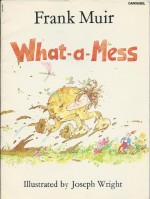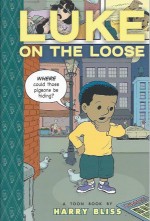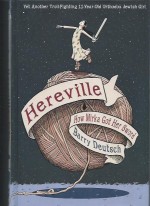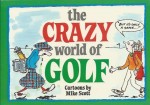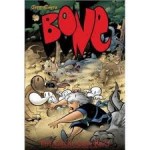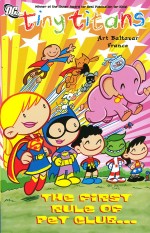
By Art Baltazar & Franco with Geoff Johns (DC Comics)
ISBN: 978-1-4012-2892-7
Win’s Christmas Gift Recommendation: just buy it – it’s so funny you’ll burst … 10/10
The links between animated features and comicbooks are long established and I suspect, for young consumers, indistinguishable. After all, it’s just entertainment in the end…
DC’s Cartoon Network imprint was arguably the last bastion of children’s comics in Americaand consolidated that link between TV and 2D fun and thrills with stunning interpretations of such television landmarks as Ben 10, Scooby Doo, Powerpuff Girls, Dexter’s Laboratory and others.
The kids’ comics line also produced some truly exceptional material based on TV iterations of their proprietary characters such as Legion of Super Heroes, Batman: Brave and the Bold and Krypto the Super Dog as well as material like Billy Batson and the Magic of Shazam! which was merely similar in tone and content.
Perhaps the imprint’s finest release was a series ostensibly aimed at beginning readers but which quickly became a firm favourite of older fans and a multi-award winner too.
Superbly mirroring the magical wonderland inside a child’s head where everything is happily mixed up together, Tiny Titans became a sublime antidote to continuity cops and slavish fan-boy quibbling (erm, uh… I think you’ll find that in…) by reducing the vast cast of the Teen Titans Go! animated series, the greater boutique of the mainstream comicbooks and eventually the entire DC Universe to little kids and their parents/guardians in the wholesome kindergarten environment ofSidekickCityElementary School.
It’s a scenario spring-loaded with in-jokes, sight-gags and beloved yet gently mocked paraphernalia of generations of strip readers and screen-watchers….
Collecting issues #19-25 (spanning October 2009 – April 2010) of the magically madcap and infinitely addictive all-ages mini-masterpiece, this fourth volume begins on a romantic note with Deep in Like.
Art Baltazar and co-creator Franco (Aureliani) have mastered a witty, bemusingly gentle manner of storytelling that just happily rolls along, with the assorted characters getting by and trying to make sense of the great big world having “Adventures in Awesomenessâ€. The method generally involves stringing together smaller incidents and moments into an overall themed portmanteau tale and it works astoundingly well.
After a handy and as-standard identifying roll-call page ‘Imagine Me and You…’ finds scary blob Plasmus and tiny winged Bumblebee brighten up each other’s drab day before a similar cupid moment affects the Brain and M’sieu Mallah whilst the diligent Robin finds his attempts to finish his homework disturbed by a succession of pesky lasses including Starfire, Batgirl and Duella all caught up in a ‘Like Triangle’.
‘Dates’ sees Bumblebee and Plasmus inadvertently cause chaos during an afternoon movie monster mash and even the ‘Intermission’ after which a sly sight gag for the oldies derides the company’s many Wonder Girls in ‘Jump Rope’.
The hallowed anthropoid obsession of DC is highlighted in ‘New Recruits’ when Beast Boy chairs a meeting of the Titans Ape Club after which The Kroc Files finds ultimate butler Alfred, roguish reptile Kroc and Plasmus each demonstrating ‘How to Enjoy a Lollipop’.
The issue ends with a word puzzle and the next promises to disclose The Hole Truth about Raven, beginning with a daybreak disaster at ‘Home with the Trigons’. Raven’s dad is an antlered crimson devil – and a teacher at the School – so when he oversleeps his sorceress scion gets him to work on time by opening a few wormholes. Of course leaving those dimensional doors around is just asking for trouble…
Meanwhile it’s washday at Wayne Manor but Alfred won’t let Robin, Beast Boy or Aqualad go down ‘To the Batcave’. However even the dapper domestic can’t withstand united pester-power and eventually he gives in and learns to regret it…
Following a perplexing maze game, the All Pet Club Issue! launches when Starfire and mean sister Blackfire write home for their beloved critters Silky and Poopu so that they can go to the secret social event, whilst can-do kid cyborg actually builds himself a brace of chrome companions in ‘Pet-Tronics’…
With ‘Club Hoppin” the entire school gathers with their uniquely compatible pets and even interview some new guys – specifically the tongue-tied and thunderstruck Captain Marvel Junior and his fuzzy pal Hoppy, the Marvel Bunny. With so many members the club then has to find roomier quarters leading to a painful tryst of Beast Boy and Terra in ‘Meanwhile, on the Moon…’
There’s a brilliant vacuum-packed bonus pin-up of the Tiny Titans in space from Franco before Hot Dogs, Titans, & Stretchy Guys! finds the kids back on solid ground and wrapped up with the DCU’s many flexible fellows as ‘Offspring into Action’ introduces Plastic Man’s excitably bonny boy.
In ‘Just Playing and Bouncing’ when Bumblebee spends some time with the diminutive Atoms Family she loses control of their Teeny-Weeny, Super Duper Bouncy Ball and accidentally gets Plastic Man, Offspring, Elongated Man and Elastic Lad all wound up before helplessly watching it bowl over Principal Slade and Coach Lobo in ‘Coffee Dog Latte’.
Thankfully Robin has the right gimmick in his utility belt to set things straight but can’t stay since he’s en route to his Bird Scouts meeting where potential new members Hot Spot and Flamebird are trying out for Hawk, Dove, Raven and Talon. Sadly when shiny Golden Eagle turns up the girls want to make him the new leader…
A semi-regular ‘Epilogue’ page often supplies one more punch-line to cap each themed issue and this one leads directly into a convoluted and confounding Elastic Four pin-up which in turn precedes a spookily uproarious tale of Bats, Bunnies, and Penguins in the Batcave! Oh My!...
It all begins in ‘Ice to Meet Ya!’ when Wayne Manor’s large penguin population get into a turf war with the house rabbits and the Batcave’s regular inhabitants are displaced in ‘Driving Me Batty’. The conflict escalates in ‘All in the Batman Family’ and Robin gets a rather stern admonition from his senior partner to put things right or else…
Happily the ever-so-cute and capable Batgirl is willing to lend a hand – but unfortunately so too are the kids she’s baby-sitting (Tim and Jason – and you’ll either get that or you won’t) and the impishly infuriating Batmite…
With even Batcow helping, things son start calming down but ‘Meanwhile, at the Titans’ Treehouse…’ not all of the fugitive Bat bats have heard the good news…
Once your ribs have stopped hurting you can then enjoy a Tiny Titans Aw Yeah Pin-up by Franco before The All Small Issue! starts with assorted big kids accidentally drinking ‘Milk! Milk!’ from the Atoms’ fridge and shrinking away to nearly nothing. Good thing the Atomic nippers think to call their dad, who’s with fellow dwindlers Ant, Molecule and substitute Atoms Adam and Ryan (another in-continuity howler, fans) for a Team Nucleus meeting…
That compressive cow-juice causes more trouble in the ‘Epilogue’ before a Blue Beetle puzzle clears the mind prior to an outrageous ending in Superboy Returns! in a fairly cosmic crossover – with additional scripting from Geoff Johns.
When Conner Kent shows up all the girls are really impressed and distracted, whilst across town Speedy is trading a lot of junk he shouldn’t be touching to Mr. Johns’ Sidekick City Pawn Shop and Bubblegum Emporium in ‘Brightest Day in the Afternoon!’ When Starfire and Stargirl then buy the seven different coloured “mood rings†from the shop they and BFFs Duella, Batgirl, Wonder Girl, Terra and Shelly, are turned into Green, Red, Yellow, Orange, Blue, Violet and Indigo Lanterns!
Soon the Tiny Titans are up in the air again and ticking off the Guardians of the Universe and their Green Lantern Corps.
It all ends well though, first in an Emerald ‘Epilogue’ and then a lavish pin-up of a passel of the Pistachio peace-keepers…
Despite being ostensibly aimed at super-juniors and TV kids, these wonderful, wacky yarns – which marvellously marry the heart and spirit of such classic strips as Peanuts and The Perishers with something uniquely mired and marinated in pure comic-bookery – are unforgettable tales no self-respecting fun-fan should miss: accessible, entertaining, and wickedly intoxicating. What more do you need to know?
© 2009, 2010 DC Comics. All Rights Reserved.

